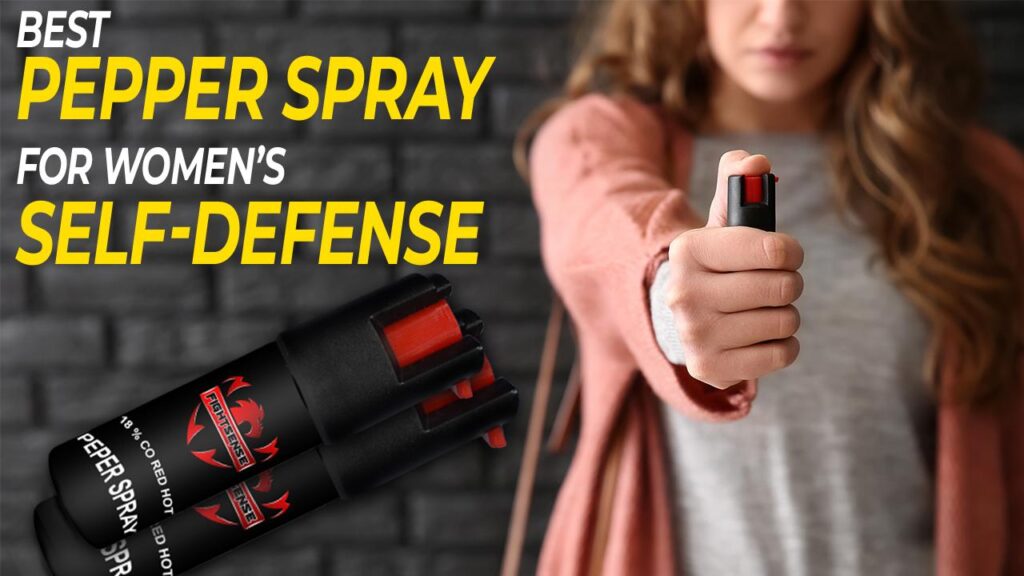Table of Contents
- Effectiveness in Real-World Self-Defense Situations
- Legal Considerations and Carrying Restrictions
- Ease of Use and Accessibility Under Stress
- Choosing the Right Option Based on Personal Safety Needs
- In Conclusion
Effectiveness in Real-World Self-Defense Situations
In actual confrontations, the practicality of a self-defense tool can make all the difference. Pepper spray offers a distinct advantage by enabling the user to maintain distance from the attacker. Its ability to cause temporary blindness, coughing, and intense discomfort buys precious seconds to flee or seek help. However, environmental factors such as wind direction and close-quarter scuffles can affect its deployment and effectiveness, requiring some confidence and quick reflexes to use correctly.
Blade keychains, on the other hand, come with their own set of benefits and risks. They rely heavily on proximity and physical engagement with an aggressor, meaning the user must possess a certain level of skill or willingness to get close enough to use the tool effectively. While they do not depend on external factors like wind, they also pose legal risks and the potential for escalation. In a nutshell, choosing between these devices boils down to situational awareness, personal comfort with their use, and the environment in which one expects to defend themselves.
- Pepper Spray: Ranged defense, immediate sensory disruption, requires proper aim and environment considerations.
- Blade Keychains: Close protection, physical engagement, demands skill and carries higher legal scrutiny.
Legal Considerations and Carrying Restrictions
When choosing between pepper spray and blade keychains, it’s critical to understand the legal landscape surrounding both. Laws vary widely by country, state, and even city, affecting whether these tools are permitted for self-defense and how they must be carried. For example, many regions strictly regulate the size and concentration of pepper spray, while others ban blade keychains outright due to their classification as concealed weapons. Ignorance of these rules can lead to severe penalties, including fines and confiscation, so thorough research before purchase is essential. Check local statutes and consider whether permits or licenses are required.
- Pepper Spray: Legal in most jurisdictions but often with restrictions on strength and minimum age requirements.
- Blade Keychains: Frequently restricted, with some areas prohibiting concealed blades altogether.
Beyond legality, carrying restrictions also affect practical use. Even if permitted, many public places such as airports, government buildings, schools, and certain events prohibit carrying these items on the premises. The ease of access and concealability may also be scrutinized by law enforcement under self-defense claims. Always carry your chosen tool responsibly, signaling lawful intent to avoid misunderstandings. A well-informed user ensures not only personal safety but also peace of mind when protecting themselves and their loved ones.
Ease of Use and Accessibility Under Stress
When confronted with a threatening situation, the ability to quickly and confidently access your self-defense tool is paramount. Pepper spray offers a straightforward advantage here; its activation typically involves a simple push or twist, allowing even individuals under high stress or panic to operate it effectively. Its compact design often features a safety lock to prevent accidental discharge yet remains easy to disengage when urgency strikes. This intuitive mechanism is crucial when every second counts, reducing fumbling and hesitation.
In contrast, blade keychains demand a higher degree of familiarity and dexterity. Under duress, fine motor skills can deteriorate, and fumbling with a small blade to deploy it safely can be challenging. Moreover, concerns about accidentally injuring oneself while drawing the blade can add hesitation. Despite these hurdles, blade keychains offer a permanent, physical deterrent that doesn’t rely on aiming or distance. However, their accessibility can be enhanced with features like quick-release mechanisms or ergonomic grips, but overall, pepper spray edges ahead in ease of use due to its intuitive deployment, especially for beginners or those who prioritize swift response in stressful encounters.
- Pepper Spray: Simple activation, minimal hand movement, safety lock mechanisms
- Blade Keychains: Requires drawing and handling precision, risk of self-injury, benefit from quick-release designs
Choosing the Right Option Based on Personal Safety Needs
When selecting a self-defense tool, understanding your environment and personal safety priorities is crucial. Pepper spray offers a significant advantage if you anticipate needing distance from a potential threat. Its ability to incapacitate an attacker by targeting the eyes and respiratory system makes it highly effective for quick escapes. However, its reliance on proper aim and environmental factors such as wind conditions can affect its performance. On the other hand, blade keychains provide a tactile, close-quarters option that doesn’t depend on external variables, but require confidence and skill in handling a blade under pressure.
Consider these factors before making your choice:
- Legal Restrictions: Verify the legality of each option in your local jurisdiction to avoid unintended consequences.
- Ease of Use: Choose a tool you feel comfortable deploying swiftly and effectively in high-stress situations.
- Portability: Both options are compact, but think about how they integrate into your daily routine and what you’ll realistically carry.
- Range and Response Time: Pepper spray provides distance; blade keychains require proximity but offer immediate physical control.
In Conclusion
In the end, choosing between pepper spray and blade keychains for self-defense comes down to personal preference, comfort, and the specific situations you anticipate facing. Pepper spray offers a non-lethal, distance-based deterrent that can incapacitate an attacker long enough for you to escape. On the other hand, blade keychains provide a physical tool that requires close proximity and some level of confidence in handling a sharp object. Both have their advantages and limitations, so assess your needs, local laws, and your own readiness before deciding. Staying informed and prepared is the true key to personal safety-no matter which tool you choose.Check Our Other Blogs
- StunGun – Your Trusted Source for Stun Guns, Laws, and Self-Defense Tips
- PepperSprayLaws – Your Trusted Resource for Pepper Spray Information
- StunGunLaws – Your Trusted Guide to Stun Gun Legality and Safety




